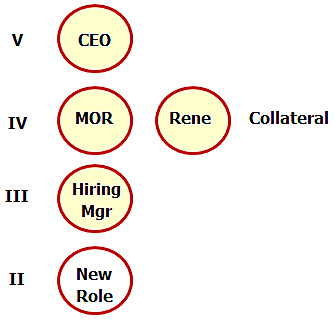“But, the resume is their experience,” Alisha complained. “It’s the central document I use, in the course of an interview.”
“The problem is, you look at the resume instead of the role you are trying to fill. You ask questions about the resume, instead of asking questions about the role and the candidate’s experience and capability related to the role,” I responded.
“But the resume is their experience,” Alisha repeated. “It’s the biggest piece of paper in the process.”
“The reason the resume is the biggest piece of paper is because you haven’t documented the Role Description, and you haven’t created a bank of questions off the Role Description. You are not prepared.”
“That’s not true,” Alisha protested. “I have several prepared questions going into the interview.”
“How many is several,” I asked for clarification.
“Well, seven or eight,” she replied.
“What if I told you, that you needed 60-80 prepared questions to feel really prepared?”

